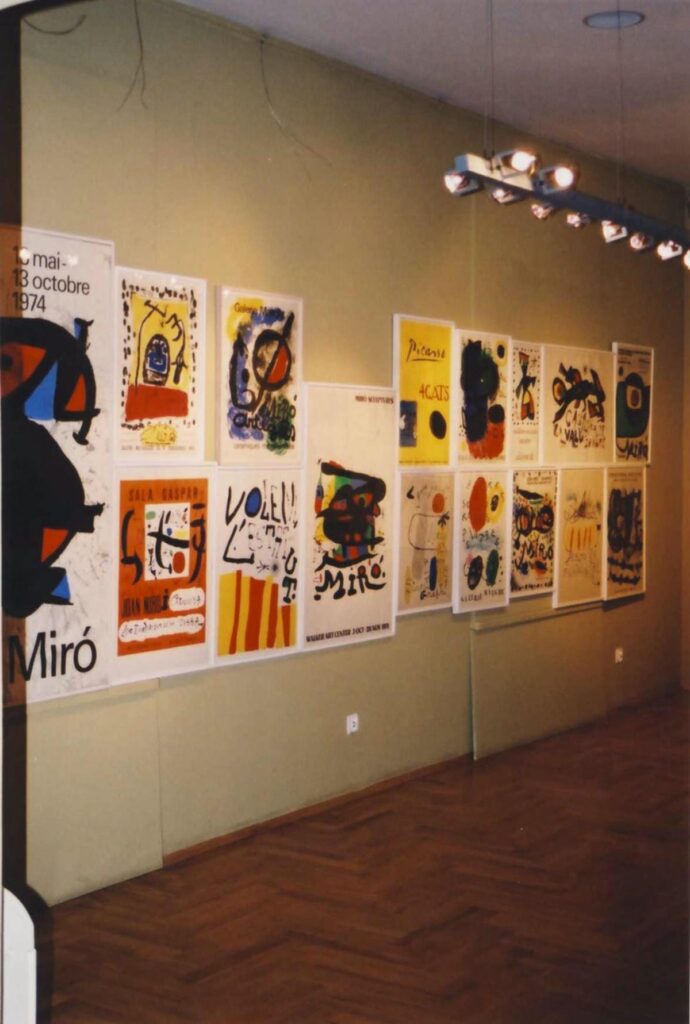Posters by Joan Miró
6 – 30 June 2004
Joan Miró is another figure from the pantheon of outstanding 20th century artists whose work can be admired in Stalowa Wola.
On display will be 156 original posters by Joan Miró, and these will be the master’s own works, not reproduced works compiled, for example, on the occasion of exhibitions.
Miró (1893-1983) – Spanish painter, graphic artist and sculptor, in addition to easel painting, also practised collage, created wall paintings, theatre decorations and ceramic compositions. He claimed that there were only two ways for artists to reach the general public: sculptures placed in public places and posters. Miró created his huge posters with the idea that they would appear in large cities, where they would be visible to everyone, at any time.
They were most naturally used in Barcelona. The striking combination of image and text, with the frequent motif of the Catalan flag, is ubiquitous there. It was Miró who was chosen for the prestigious task of creating the poster for the 1982 World Cup in Spain. The image of players fighting over a red ball, with its symbolism alluding to the sun, gained worldwide fame. A fragment of the poster was later used to popularise tourism in Spain.
One of the secrets of Miró’s posters is that almost every one features eyes. With their magnetism, they almost force the viewer to keep his eyes on the poster. On some, the eyes are plentiful, but on most one can easily distinguish the looking figure dominating the whole. What the viewer sees next depends mainly on his background, imagination and sensibility.
Many of Miró’s posters were created for exhibitions at the Maeght Gallery. The first one advertised the last great demonstration of the Surrealists in 1947. Like many that followed, it was created in the largest lithographic studio of the time at F. Mourlot in Paris. Its clients also included Picasso, Braque, Leger, Matisse. Miró always personally supervised the entire execution process. It was he who designed the cover for a portfolio of 52 posters by significant artists created in the Paris studio (1963).
The artist often illustrated works by Catalan poets, such as Salvador Espriu. When his book illustrations were exhibited at the Catalan Center in Paris (1978), Miro made the poster for the exhibition himself. As for the play “Mori el Merma” (Death to the Tyrant), staged shortly after Franco’s death (1975), for which he also created costumes and masks. He often supported projects with which he sympathized. He made posters for UNESCO, Amnesty International, and the Salvador Allende Museum.
Miró’s style combines elements of surrealism and organic abstraction with the use of graphic signs sometimes reminiscent of primitive art or children’s drawings. In his work, the synthesis of form harmonizes with a rich imagination and sense of humor, enriched by a peculiar moodiness.
The exhibited posters come from the collection of Nils Tryding from Sweden.
The exhibition was brought to Poland by the Castle of Pomeranian Dukes in Szczecin
